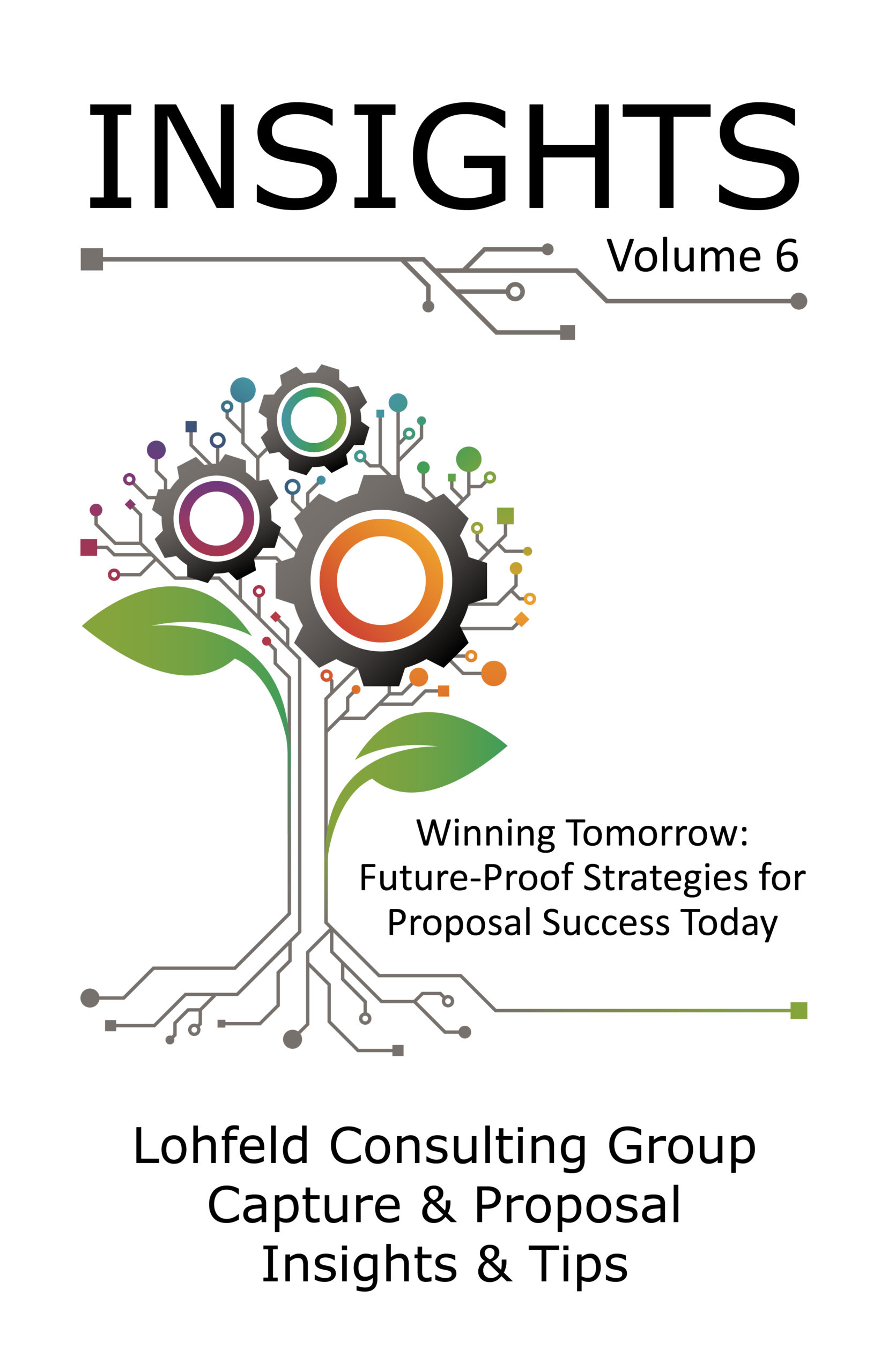Winning More Government Contracts in a Changing Landscape

As we stand on the brink of Government Fiscal Year 2025 (FY2025), continued advancements in technology, evolving security measures, and potentially even a new presidential administration are set to transform how we capture bids and generate proposals. This blog explores the key trends shaping request for proposal (RFP) requirements (Table 1). In addition, we explore trends in government RFP statements of work (SOW), instructions, and evaluation criteria (Table 2). By understanding these trends, bid and proposal professionals can stay ahead of the curve, adapt their strategies to meet the evolving expectations of government agencies, and win more government contracts.
Trends Driving Bids and Proposal Requirements
In FY2025 and beyond, the trends listed in Table 1 will likely influence proposal requirements.
Table 1: Trends Driving RFP Requirements
| Trend | Name |
| Technology | Artificial Intelligence (AI) and Machine Learning (ML) Integration: Emphasis on using AI and ML to enhance productivity, automate routine processes, and accelerate service delivery.Cybersecurity: Stricter cybersecurity measures and compliance requirements to protect data based on rising cyber threats coupled with strong defense postures to mitigate threats. Science and Space-Related Projects: Increased investments in space exploration, satellite technology, and space-related research.Biometric Technology and Trust Architecture: Focus on using tools to reduce dependence on passwords and improve asset protection. Blockchain Technology: Continued interest in blockchain for secure and transparent transaction recording, particularly in supply chain management and contracting. |
| Data Management | Enhanced Data Security: Implementation of advanced security protocols to protect data from breaches and cyberattacks. This includes encryption, multi-factor authentication, and zero-trust security models.Seamless Data Integration: Tools and platforms enabling seamless data integration from multiple sources, facilitating data analysis.Interoperability Standards: Adoption of tools and processes that facilitate data consistency and accessibility across platforms.Edge Computing: The processing of data closer to its source to reduce latency and improve real-time analytics.Data Governance Frameworks: Focus onclear policies that ensure data accuracy, consistency, and reliability.Metadata-Driven Approaches: Metadata enhances data usability and governance by improving data discovery, lineage, and classification.Data Fabric and Mesh: Creation of an integrated layer of data and connecting processes to provide a unified view of data and the decentralization of data management by treating data as a product. |
| Sustainability, Resilience | Environmentally Friendly Practices: Emphasis on eco-friendly products and services, especially in evaluation criteria.Energy Efficiency: Support for energy efficiency, self-sufficiency, and carbon footprint reduction projects.Agility and Adaptability: Emphasis on the ability to change quickly and develop roadmaps, tools, and resources to reach transformational goals. |
| Health and Safety | Public Health Initiatives: Increased funding for public health projects that reduce health threats and enhance national supply chain capabilities. Safety and Resilience: Grants to improve community resilience to natural disasters and enhance public safety measures. |
| Economic Development | Support for Small Businesses: Initiatives to boost small business participation in government contracts.Innovation Grants: Funding to support innovations in AI, space, cybersecurity, medical, semiconductor, and other advanced technologies. |
| User-Centric Approaches | User-Centric Design: Emphasis on user-centric product design to ensure increased efficiency, productivity, and user satisfaction. User Feedback: Integration of feedback loops into systems to analyze user feedback and improve services. |
| SOW Development | SOWs: We are likely to see the government use AI or Generative AI (GenAI) to develop statements of work (SOWs). |
Trends Driving Proposal Development
The trends listed in Table 2 will likely drive RFP requirements, instructions, and evaluation criteria in FY2025 and beyond.
| Trend | Name |
| RFP Requirements | Risk Management: Detailed risk assessments and mitigation strategies to address potential challenges, particularly in security and data privacy.Innovation: Clear sections explaining the proposal’s innovative aspects and demonstrating how new technologies or approaches can accomplish the government’s requirements at an acceptable level of risk.Detail: Emphasis on providing as much detail as possible about solutions, methodologies, tools, and expected outcomes within page limits. |
| Proposal Content | Customer Intimacy: Companies that understand customers’ requirements, priorities, schedules, and risk tolerance will have a competitive edge. Visualization: Customers prefer succinct proposals that are easy to read and score, with visuals that accelerate their review and comprehension. |
| Proposal Instructions | Simplified Submission Guidelines: Clear instructions to make the application process more accessible and reduce questions.Streamlined Submissions and Automated Tools: Standard templates for plans, budgets, and metrics to streamline the submission process.Brevity: Continued page count reductions to accelerate reviews.Oral Proposals: Orals are used toaccelerate the evaluation process. |
| Evaluation Criteria | Innovation: Higher scores for proposals that demonstrate the innovative use of technology and creative problem-solving. Data-Driven Approaches: The use of analytics to justify and predict outcomes, demonstrating evidence-based approaches. Transparency and Accountability: Proposals demonstrate clear plans for transparency and accountability in project execution. |
| Other Trends | Increased Number of Bids per Capita: Instead of using AI tools to reduce the number of bid and proposal professionals needed, AI tools encourage companies to bid more to increase revenue. Workforce Training: Train your workforce to stay ahead of trends so they can develop high-scoring proposals that meet customer needs. Invest in succession planning to maintain your workforce’s resiliency. |
Conclusion
Understanding and integrating these trends into your proposal strategies is crucial for success in FY2025 and beyond. By staying informed and adaptable, you can navigate the evolving landscape effectively, ensuring your proposals meet the latest requirements and stand out to government evaluators. At Lohfeld Consulting Group, we are committed to helping you excel in this dynamic environment, providing the insights and support needed to secure winning bids.
Related Content
- How Should You Prioritize Your Bid and Proposal Training Budget?
- Generative AI for Proposal Development: Writing the Proposal of the Future (YouTube)
By Brenda Crist, Vice President at Lohfeld Consulting Group, MPA, CPP APMP Fellow
Lohfeld Consulting Group has proven results specializing in helping companies create winning captures and proposals. As the premier capture and proposal services consulting firm focused exclusively on government markets, we provide expert assistance to government contractors in Capture Planning and Strategy, Proposal Management and Writing, Capture and Proposal Process and Infrastructure, and Training. In the last 3 years, we’ve supported over 550 proposals winning more than $170B for our clients—including the Top 10 government contractors. Lohfeld Consulting Group is your “go-to” capture and proposal source! Start winning by contacting us at www.lohfeldconsulting.com and join us on LinkedIn, Facebook, and YouTube(TM).
Paperback or Kindle
10 steps to creating high-scoring proposals
by Bob Lohfeld
contributors Edited by Beth Wingate
Subscribe to our free ebrief
Teaming friends, frenemies, and enemies—12 tips to mitigate harmful effects
Did you know that contracting officers spend up to 20% of their time mitigating disputes between teaming partners? In an informal poll we conducted on LinkedIn last month, 40% of respondents classified their teaming partners as “frenemies” on their last bid.
Explore Further
- Advice (538)
- AI (25)
- APMP (18)
- Army MAPS Contracts (3)
- Business Development (291)
- Capture Management (264)
- Complex Technology Grants Services (26)
- Favorite Books (5)
- GenAI (4)
- Go-to-Market (27)
- Graphics (5)
- Lohfeld Books (2)
- NASA SEWP VI Contracts (2)
- Navy SeaPort-NxG Contracts (2)
- NIST MSE Grants (1)
- NIST NAPMP Grants (2)
- Past Performance (63)
- Post-submission Phase (14)
- Pre-RFP Preparation (262)
- Proposal Management (335)
- Proposal Production (74)
- Proposal Reviews (38)
- Proposal Writing (104)
- Pursuit Phase (108)
- Research Report (4)
- Resources (63)
- Tools & Tips (417)
- Training (13)
- Uncategorized (223)

Sign Up for INSIGHTS and Download your FREE book
We'd love to help you with your proposals. Enjoy our complimentary Lohfeld Consulting Group Capture & Proposal Insights & Tips book with your FREE subscription to our Insights Newsletter.
GET YOUR FREE BOOK



